Kenzo Takada’s approach to fashion has become the model for modern designers. A true pioneer, after launching his label in the early seventies, he became a visionary force with many firsts—embracing ready-to-wear, launching a fragrance, and doing a mass-market collaboration (in the eighties) with The Limited. He sought a freedom in fashion full of fantasy and joy.
Seemingly never afraid of the next challenge, Kenzo Takada has recently been focusing his innovative approach on interior design and decor. This year, he collaborated with Roche Bobois to create the Kenzo Takada Collection. For the line, he reimagined the iconic Mah Jong modular surface (designed by Hans Hopfer), upholstering it in bright colors and patterns inspired by kimono fabrics. The series is completed by cushions and ceramics that mix Parisian savoir faire with Japanese aesthetics.
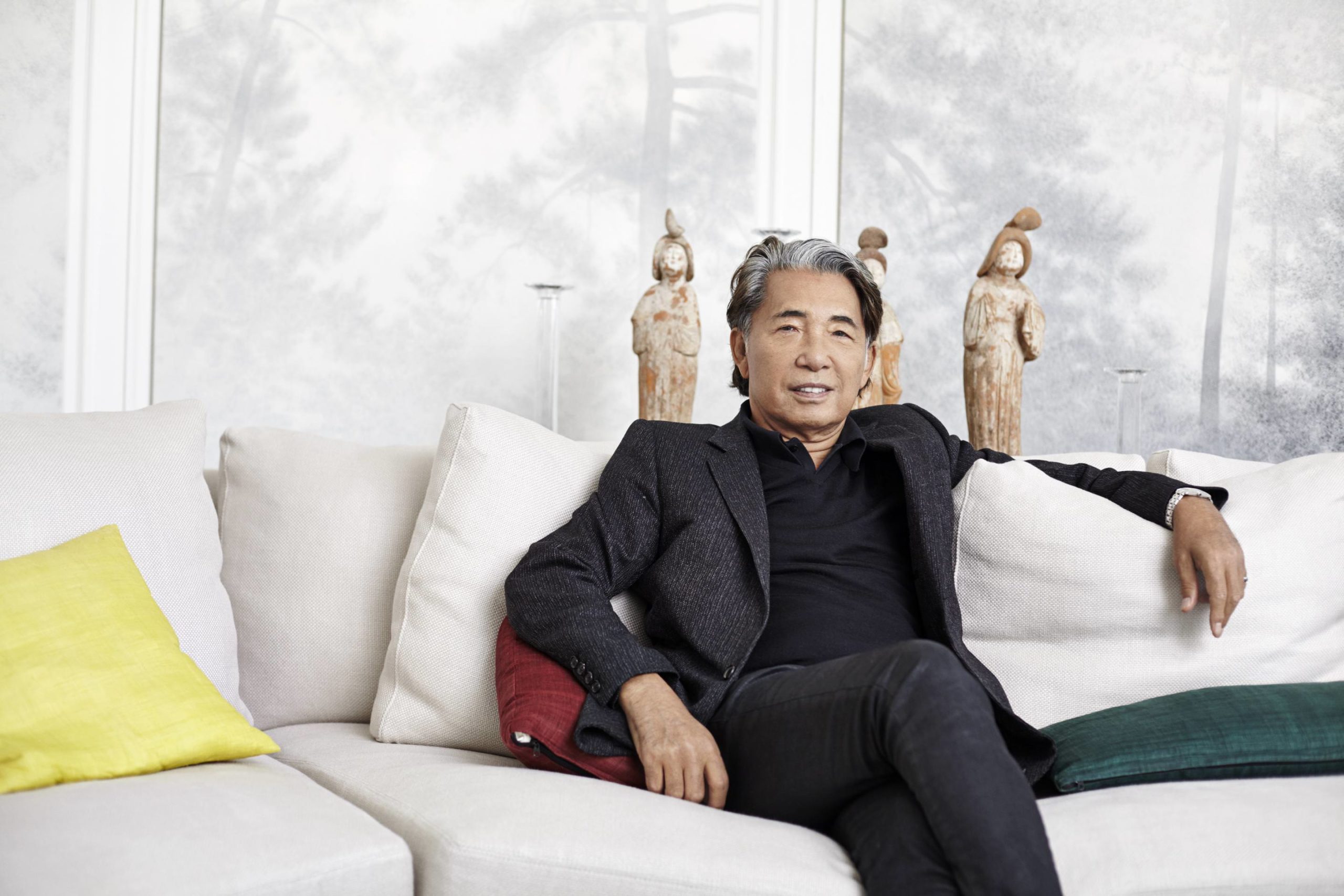
Courtesy of Kenzo Takada.
Whitewall spoke with Kenzo Takada about his design practice and unbridled creativity.
WHITEWALL: What first excited you about fashion?
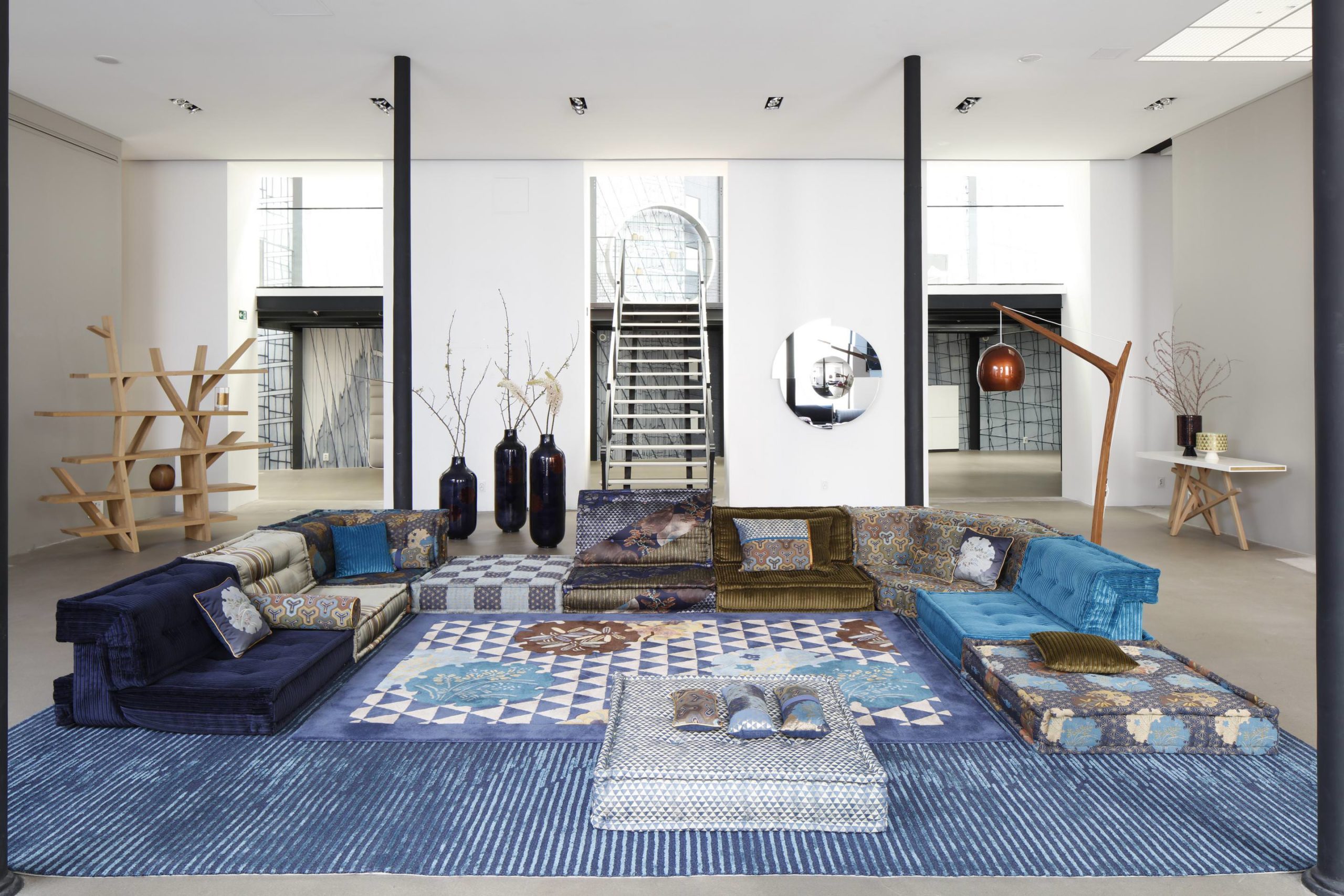
Courtesy of Roche Bobois.
KENZO TAKADA: Growing up in Japan following World War II—it was a fairly dark time and era—there was no fashion in place as an industry of pure fashion. My attraction to fashion was through my mother and sisters and the magazines they were bringing home, which attracted me to Paris and other western countries. There was a joie de vivre in it I dreamt about.
WW: You changed a lot of things in the fashion industry—doing ready-to-wear shows, launching fragrances, and collaborating with mass-market companies long before it was popular.
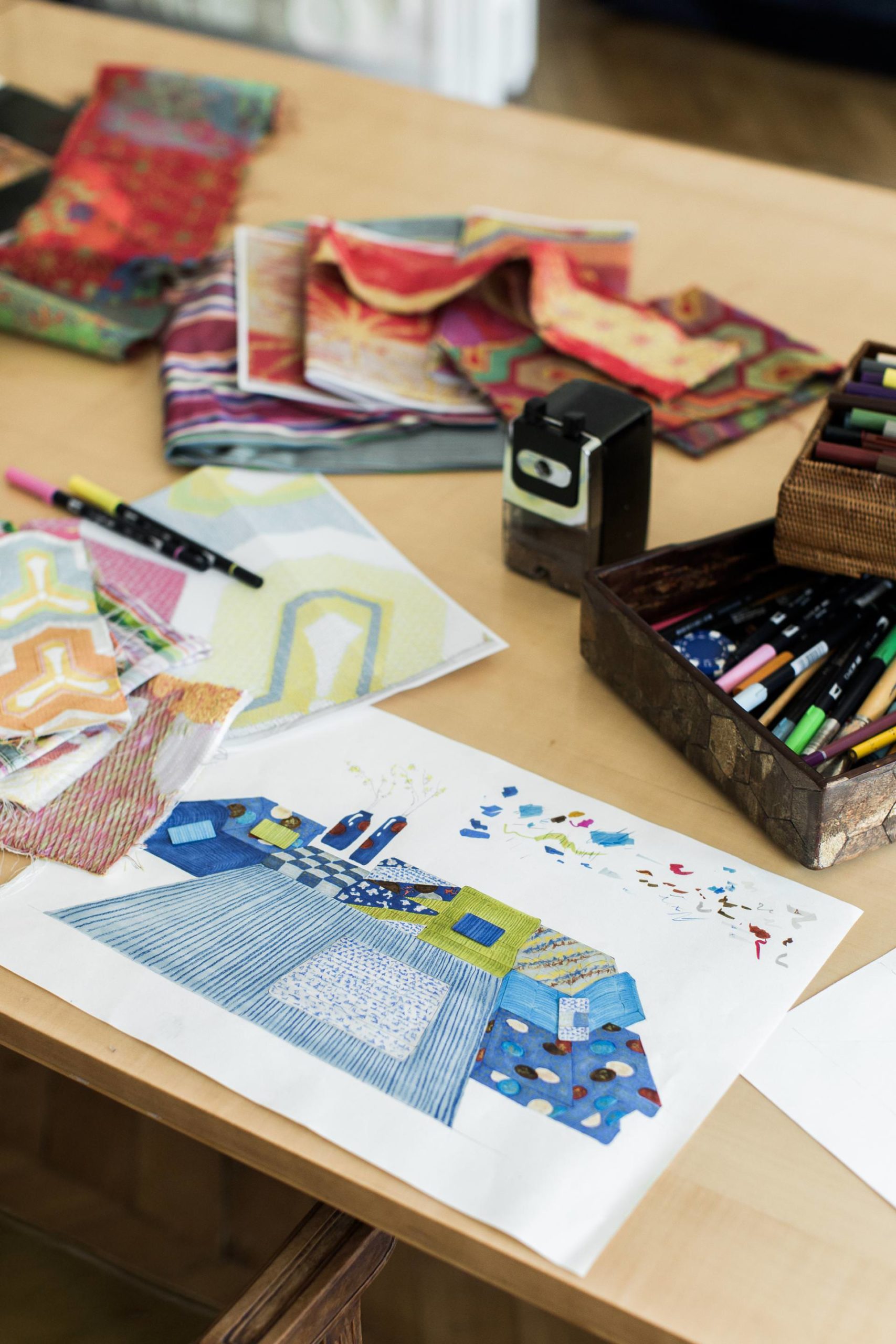
Courtesy of Roche Bobois.
KT: When I was in Paris in the late sixties, fashion was either well-established haute couture or hippie fashion. There was really nothing in the middle. It was either/or. I was traveling every weekend to London, where there was more excitement in fashion and it had more of this new kind of ready-to-wear, which I brought back to Paris—a fashion definitely influenced by other cultures like Japan. I started ready-to-wear fashion shows when it was not recognized in the early seventies, before the industry realized they needed to do a fashion show for ready-to-wear.
WW: Did you see yourself as a risk-taker? Is that part of your personality?
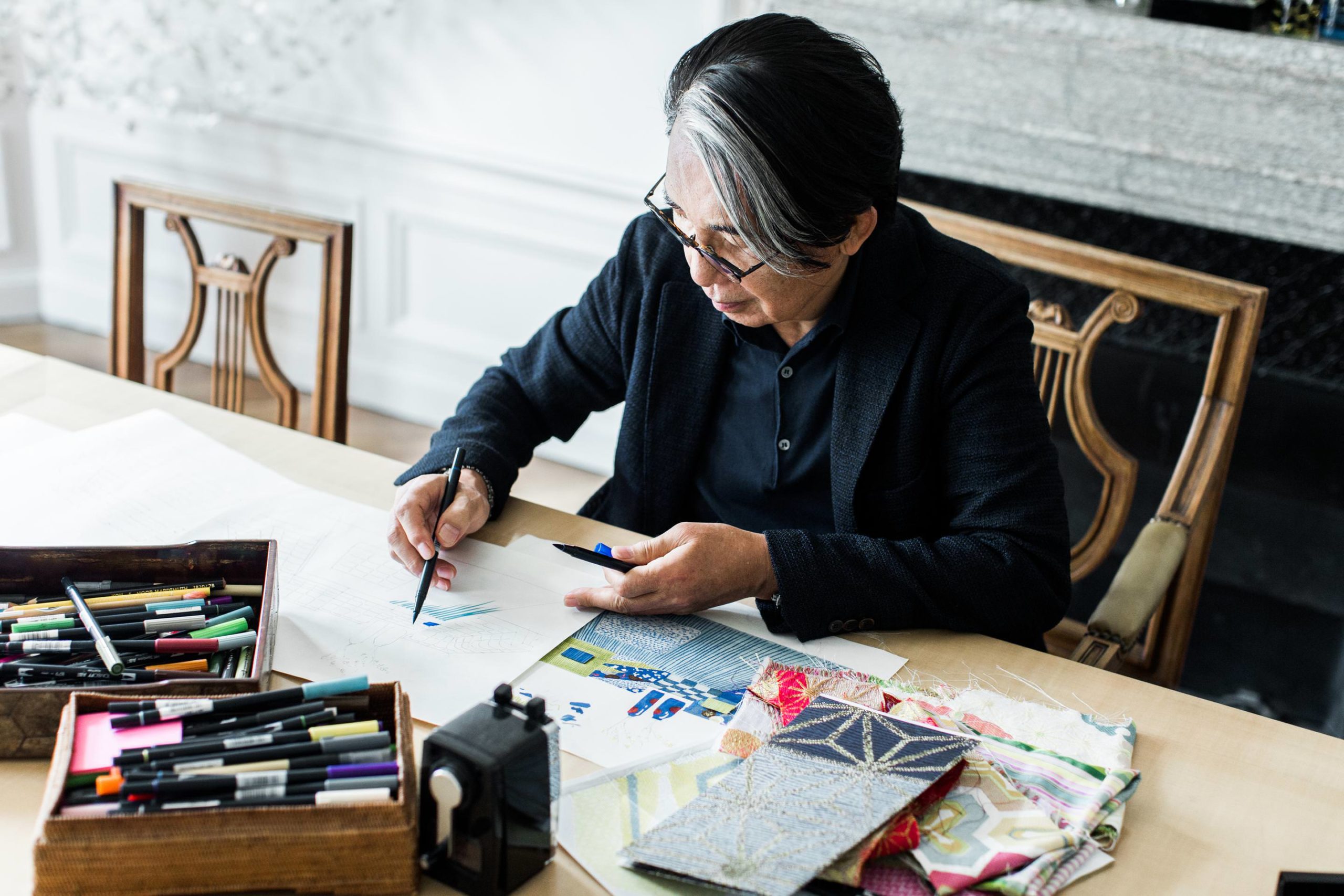
Courtesy of Roche Bobois.
KT: When I was younger, a lot more than today. [Laughs] But I love the adventure. Now, at my age, it’s a lot more difficult to go into different avenues, but I do love it.
WW: Were art and design always interests for you?
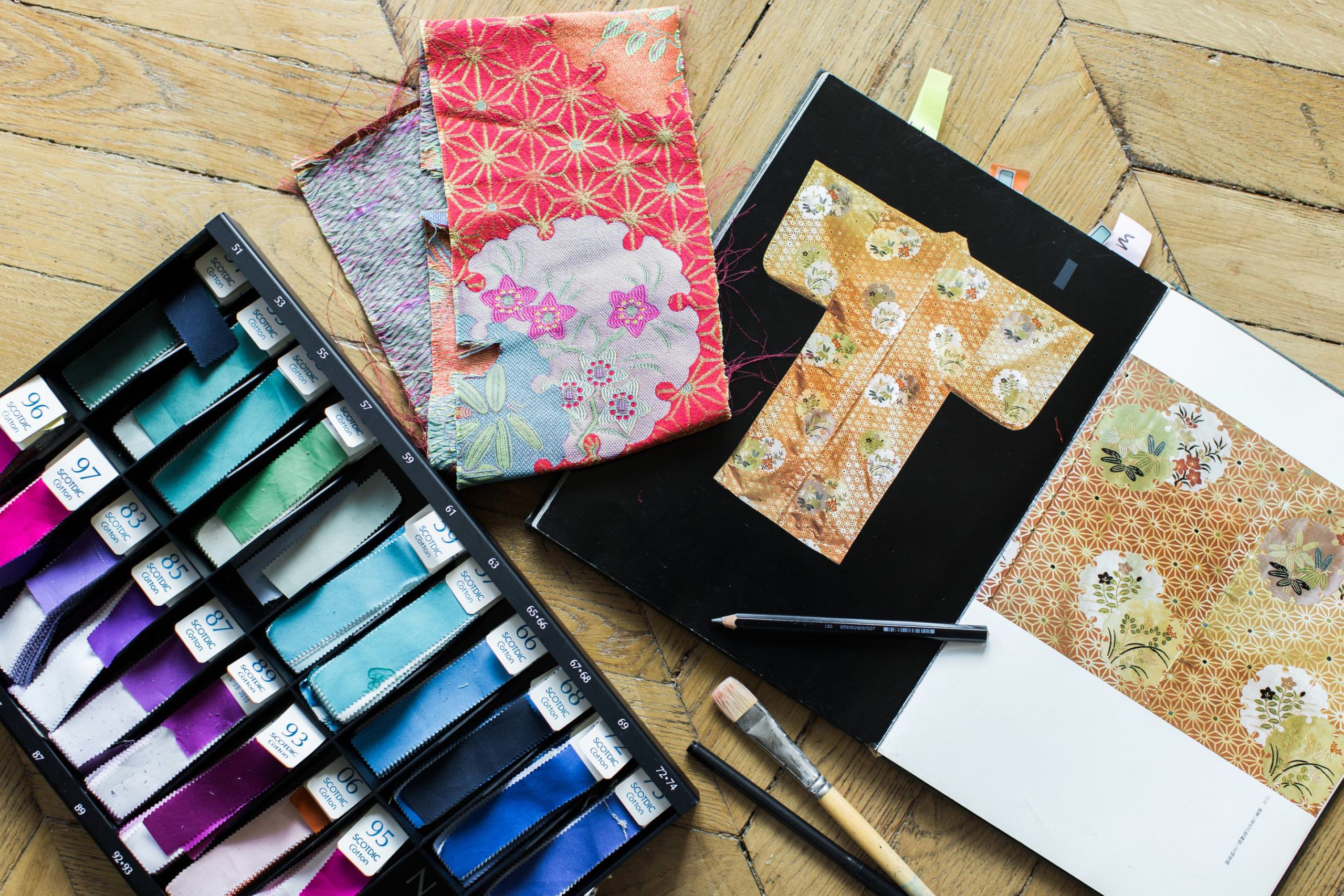
Courtesy of Roche Bobois.
KT: Yes. Since I was very young I wanted to work in a more creative process and never thought I was fit to be a lawyer or a trader or an accountant or anything like that. I really wanted to work in more creative fields. I was more attracted to that—to be an artist, or even something in food.
WW: How did you find a channel for that creativity after leaving your label?
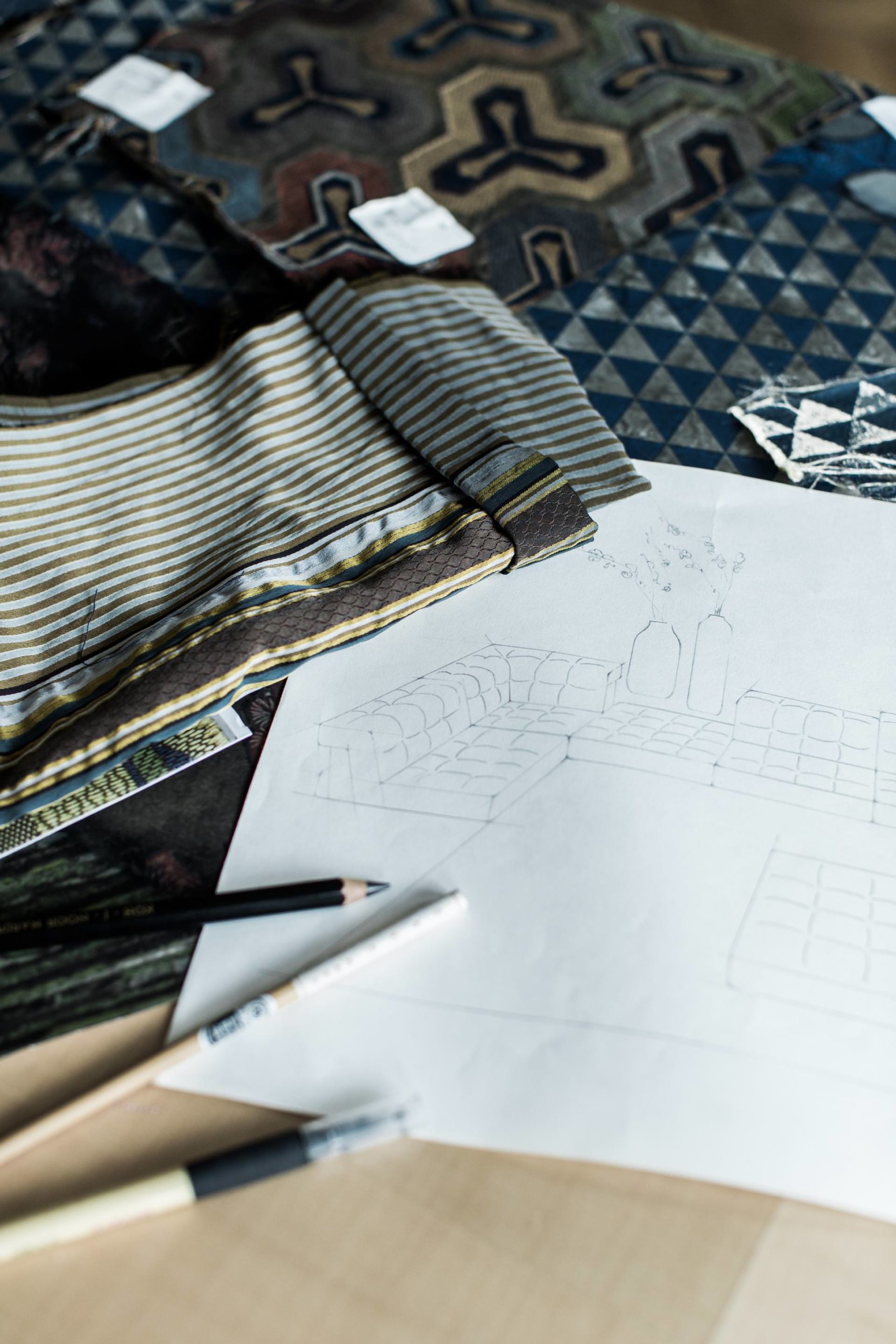
Courtesy of Roche Bobois.
KT: When I left around 2000, my idea was to go on a constant holiday [laughs] and really take a break. After two years I missed work and my creativity, but I didn’t want to start a new house, so I started to learn new things like piano, painting, ballet lessons. I love learning new things. I also worked on collaborations with houses that have real know-how on different projects, to give my touch. Which I did for Roche Bobois.
WW: Yes, let’s talk about that collaboration. You first wanted to work with the Mah Jong sofa?
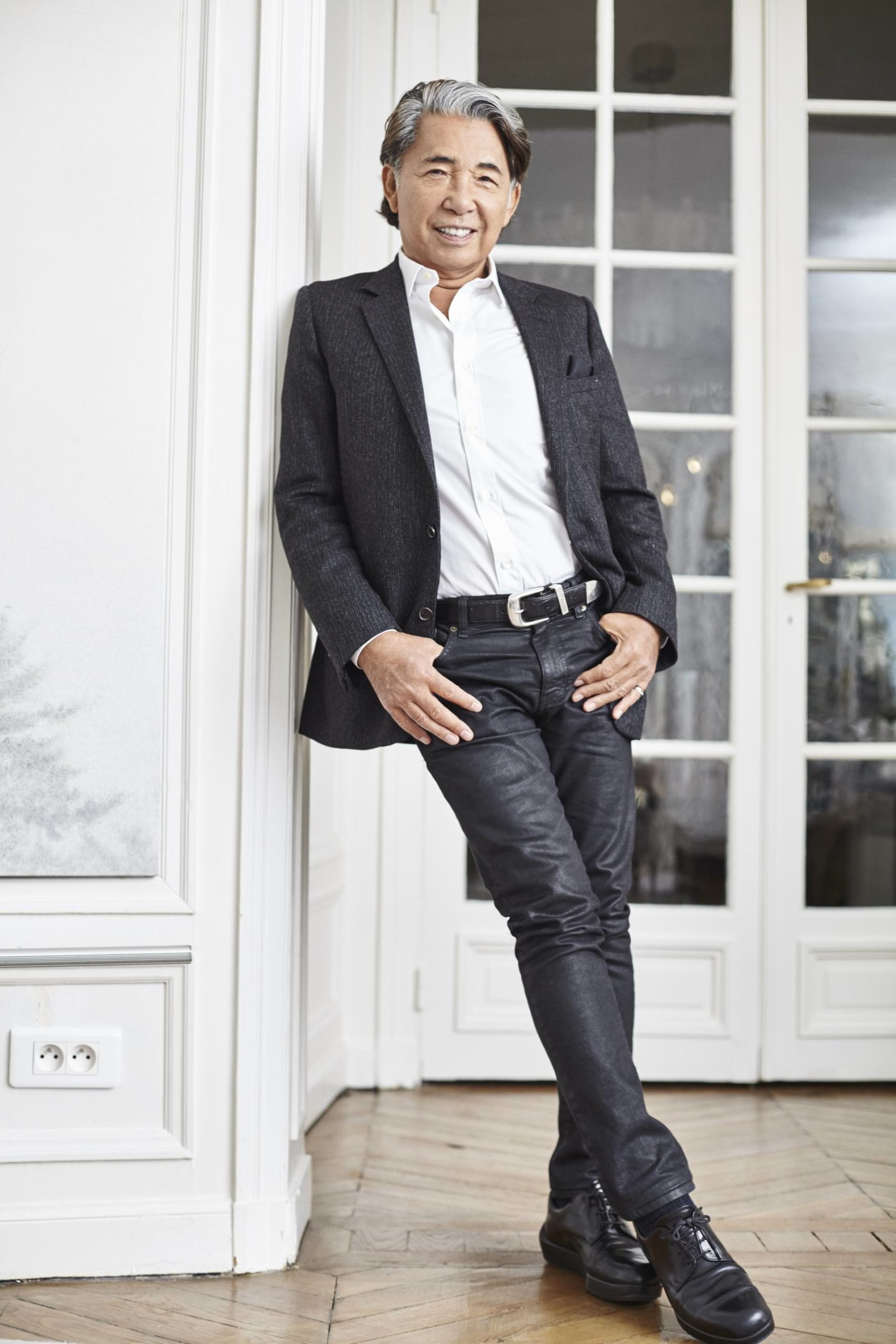
Courtesy of Kenzo Takada.
KT: Yes.
WW: That launched in 1971, so there is a connection, time-wise, to your story.
KT: Absolutely. The same age. [Laughs]
WW: What is a guiding design principle for you when it comes to furniture?
KT: Working on home, I love it. Working on dressing up the Mah Jong was a different task. It was how to work with graphics, textiles, and I’m all about harmony of different elements. That’s much closer to my real expertise. The work that was behind it was not to dress a person or make a collection, but to work on dressing up a piece of furniture, an iconic piece, which would fit into different environments. The thought process was different, but the work and know-how of textiles I’m good at.
WW: What was the inspiration behind the ceramics in the collection?
KT: The ceramics came later. I wanted to give more depth to the collection and to really bring decorative elements that could accompany it and make it more complete. The ceramics are mostly vases and pots. I used different color tones—morning, midday, and evening colors—so these ceramics were done in the same way.
WW: When designing, you’ve talked about wanting to bring some kind of dream. How do you bring in fantasy?
KT: I love to bring a very positive feeling in whatever I create. Roche Bobois really pushed me to go for it and do exactly what I felt. They were really supportive of whatever I brought forward.
WW: You’ve talked about how you’ve been revisiting ancient Japanese materials and traditional craftsmanship, visiting artisans in Japan more often lately—after 50 years in Paris. Why do you think that is?
KT: I’ve lived in Paris for more than 50 years and was traveling less to Japan. And now I’ve been taking more and more time to visit Japan every year. The country has been changing a lot in a positive way. And I’m a strong supporter of this new era of young people going back into craftsmanship and trying to bring back forgotten know-how.
WW: In 2009, you had an auction of your collection when you sold your house. When you moved to a new space, what kind of environment did you want to create with that fresh start?
KT: I like changing my skin. You change your environment, you change your process, and you change ideas. I need to move—I say it all the time. After a few years, I want change.
WW: Who are the artists and designers you call friends?
KT: I have many friends who are interior decorators or architects, in different creative fields. I really respect them and love the way they produce and work. I exchange a lot with them. I have great respect for Ed Tuttle, an American architect. He mixes nature and environment with every project.
WW: Can we expect more interior design projects, like the one with Roche Bobois, from you?
KT: Yes, definitely. I enjoyed the way Roche Bobois worked. They have a really great team, and I love working around the field of home and decoration. But I don’t want to have too many projects to handle. For now, through, it’s been very exciting.
WW: Given your creative output thus far, what is the connection between art and design and fashion for you?
KT: To give a certain joy and beauty.









